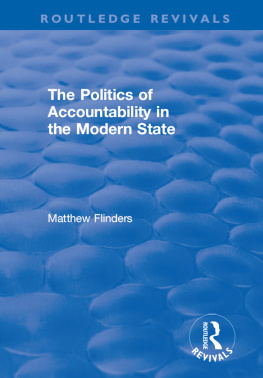E very night, just after sunset, the woman would sit cross-legged on the ugly shag rug, light a candle, and place it on a saucer in front of her. She would watch for a moment and observe how the candlelight pushed back the shadows in the room and held them at bay. Gently, then, she would close her eyes, sit up straight, and begin to recite to herself, slowly, attentively, a daisy chain of short prayers .
Let nothing disturb thee ,
Let nothing affright thee .
Everything is changing .
God alone never changes
When she had come to the end of Saint Teresas Bookmark Prayer, she would move onperhaps to a prayer of Saint Catherine of Siena :
and the soul is closed in God ,
and God in the soul ,
as the sea in the fish
and the fish in the sea .
If her mind began to wander, she would bring it back, over and over, and she would continue in this way for a full hour. Every night, no matter what, she would light the candle and call down the spirit of one light-filled being after another, summoning them into her own deep darkness and grief .
My friend Linda was in her early forties when she hit that place you pray youll only ever read aboutsliding into it, the way you do in a nightmare, mute and in slow motion. Depression enveloped her, so black and unrelieved that it blotted out everything that had carried her from one day to the next. She left her marriageleft the single-handed fight shed been waging to preserve itand in effect left her two teenaged children, too. (It wasnt just that I had no money, she told me, I had nothing inside. Nothing for them, nothing for myself.) The salary from her part-time teaching job barely paid the rent on a grim little studio apartment. By day she could work: her students were a distraction, one gets through. Nights, things tended to bottom out. Late one sleepless night, though, she picked up a book that a previous tenant had left in a closet and found the one thing she could do. It was a brief, plainspoken introduction to the practice of meditationa form of meditation that involved the use of inspirational passages.
I was so desperately unhappy, she told me, and that was my lifeline. I would place myself at the feet of each of them in turnTeresa, Clare, both Catherinesand beg them to give me strength.
In timeand it took a good long timestrength came, and lightfull-time work and reunion with her children. The marriage could not be retrieved, but the bitterness that had surrounded its dissolution has all but gone. She meditates mornings now as well as evenings, and its no longer a desperate stratagem. Footsteps, rather, on a path thats firm underfoot.
The traditional use devout Catholics have made of women like Saint Teresa or Saint Clare has been to ask them to intercede on their behalf. God, in this view of things, is something like an overextended CEO with bad mood swings: unreasonable to think hed concern himself directly with our difficult children, our more difficult marriages, our worries about money and health and neighborhood violence.
As old ways of thinking about God slip away, though, ideas about intercession have altered, too. When Linda invoked her favorite saints, intercession was the farthest thing from her mind. Her appeal was direct and visceral: Be here for me nowyes, you and stay the night, and walk me through my days. She had studied their lives and their words, had felt her way toward their humanity, and knew that none of them was a stranger to long, dark nights.
Through meditation, Linda was able to come to grips, by slow degrees, with the demons of her own mind. Each time a wave of fear or anger or despair arose, she would pull her attention gently back and place it instead on the words of the prayer, and as the very capacity to make that choice grew stronger, she began to feel safer. But by using those particular prayers, she was also reaching out toward what tradition calls the company of saints, a concept that is as universal as sanctity itself. I take refuge in the Buddha, says the age-old monastic vow of Buddhism. I take refuge in the dharma (the law). I take refuge in the sangam (the brotherhood and sisterhood of seekers).
Deep in our collective memory is the understanding that when a Teresa or a Clare comes along, everyone benefits. Grace wells up, and everybodys thirst is quenched: Clares contemporaries called her a clear stream of Gods bounty. Linda was not, in fact, a Catholic; shes only a Christian in the broadest sense of the word. But she knew without question that the very extremity of her plighther terrible thirstwas sufficient claim.
I suspect that its probably always been in this spirit, both trusting and fierce, that women have invoked their saintsas best friends, and in ways that hark back to the magical, lighting a candle and calling them down into the circle of their need. This is why I have placed Lindas story here at the beginning. I mean her to be present throughout, like a faint watermark on every page, the simple fact of her seated alone and resolute before her candle. She is Everywomanevery one of us who has felt the firm, implacable pull that Mechthild of Magdeburg called the inward tug of God and who has done our best to answer it.
On the face of things, my own story bears little resemblance to Lindas. On the face of things, as my forties gave way to my fifties, there was barely a ripple. I had reached my own kind of impasse, though, and if nobody else was aware of it yet, they would have been shortly: things had begun to crumble fast along the edges. That they stopped crumblingthat, like Linda, I found strength, after all, and light for my journeyhad everything to do with the fact that I, too, had put together a company of saints who would prove allies and helpmeets in a struggle I hadnt even known lay ahead.
The seeds of that struggle lay in the distant past. I was twenty-three when I first took up the practice of meditation with a spiritual teacher. The womens movement was just getting under way, and I was certainly tuned in to its first stirrings. But the grief Id been feeling around the experience of being a woman in this culture wasnt easy to isolate from the grief the Buddha said comes of entering the human context in the first place. Probably it made sense to address the bedrock problemsfear, greed, angerand figure the others would get taken care of along the way.
And in fact, choosing the particular teacher I did (in Berkeley during the late sixties you really did have your pick) was certainly not a betrayal of my nascent feminism. Eknath Easwaran had been a professor of English from Kerala State in India; he came from one of the few matrilineal communities in the world. In his family, descent is traced through the mother. His own spiritual teacher was his mothers mother. When he read the works of various mystics and commented on them with regard to meditation, he was as likely to read Teresa of Avila or Indias Mirabai as he was Meister Eckhart or Shankara. Never did he convey by so much as a raised eyebrow or a smile at the wrong places anything that would suggest women were not fully the equal of menspiritually, intellectually, or creatively. Through Easwaran I gained access to the worlds of Sri Ramakrishna, Indias greatest modern saint and a devotee of the Divine Mother, and Mahatma Gandhi, who credited his wife, Kasturba, with teaching him the transformative power of nonviolence.









